18 December, 2000

The TEA folks have made it possible for teachers to borrow a set of the ECW if they would like to show their students what we wear down here in Antarctica. I am the TEA ECW Representative for the Northern Rockies and I would be happy to loan the ECW to your school. All that is required is that you pay postage and insure the materials. Here are the First Graders at Bench Elementary in Billings, Montana checking out what we wear here at the South Pole. My wife has generously given her time to visit several schools with this gear during my absence.
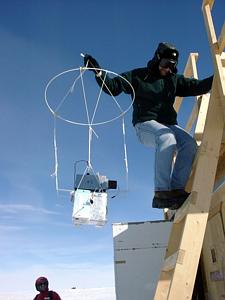
It sometimes seems that the little electronic gremlins all strike at the same time. At about 4:30 PM we were ready to go with the HYVIS on its maiden voyage. When we were checking to see that the film would advance electronically at a fixed rate we found that the film and cameras were no longer working. This was very frustrating because they entire system had checked out just a couple of days ago during the ground test. After taking the package apart we found that the new film reel was too tight and this was preventing the advancement of the film. A little loosening and the motor could pull again. A minor glitch, but never the less a frustration.
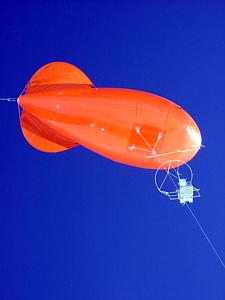
As you can see from the previous image of Von carrying the HYVIS up to the roof of SPARCLE central, the device is a bit awkward. Before we could fly the HYVIS we ran into another glitch! After repairing the film reel we went on to checking the radio receivers. As we began to test the signal strength of the 403 Mhz receiver we lost the signal and only got static after about 5 minutes of warming the instrument. At first we thought that the problem was a low charge on the radiosonde battery pack. As the hours progressed we came to the conclusion that we somehow blew the receiver. It is a good thing that we have two of everything. Redundancy, like in aircraft has made it possible to continue with the research. Once we replaced the receiver we were ready to fly!
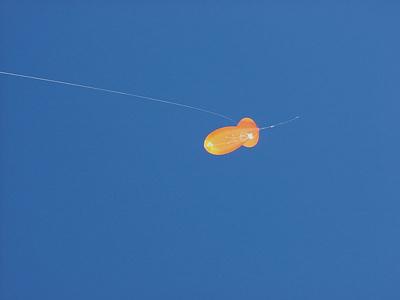
Once we started the flight we celebrated the fact that we were in the air and that everything was running smoothly... well at least for the first 12 minutes of the flight. At T + 12 minutes the film would no longer advance automatically and the cameras stopped switching between High and Low resolution. The same problem we had on the bench! We felt that it was worth continuing with the flight even though the film was not advancing since we were still able to record video images. After about an hour we reeled the Blimp back in and tomorrow we will investigate the problems that we encountered on this flight. As I ran the winch to bring the Blimp back in from the 350 meters or so that it went to i looked at the clock and saw that it was almost 10:30 PM and I still needed to send off my daily journal. A long day on the front lines of science.
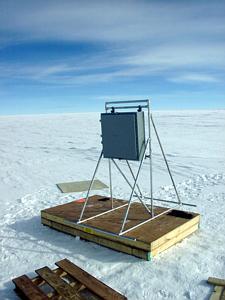
Today I have been doing a lot of odd jobs. My first task was to make the near retro reflector stand more stable. It is a simple aluminum stand that is really not made to take the weight of the retro reflector. The stand is held together by allen head screws that seem to work loose with the cold and perhaps the vibrations due to the wind. I added the cross brace between the two vertical uprights and tightened all the screws. It has almost become a daily job to check to make sure that the stand is stable.

In preparation for our first HYVIS flight later today I have been soldering battery packs. We have enough batteries to make eighty flights, the only thing is they need to be grouped in to batches of five wired in series to produce the necessary voltage to run the suction fan that brings the ice parcticles into the viewing area for the cameras to image.
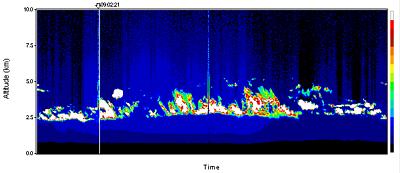
I have spoken about the NASA LIDAR that is part of our research here at the Pole. The LIDAR is a pulsing laser that is looking up into the sky at the atmosphere. If the light from the laser hits a cloud it is reflected back to the laser and the distance is measured based on the known speed of light. The thicker the cloud the closer to white the color of the image. If the cloud is very thick then there is no view above the white layer and the rest of the image appears black. We are using the LIDAR to determine the best time to fly our HYVIS and other instruments.
Contact the TEA in the field at
.
If you cannot connect through your browser, copy the
TEA's e-mail address in the "To:" line of
your favorite e-mail package.
|
